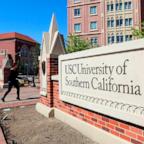Transplants for Diabetes Promising, Yet Limited
May 29 -- Can diabetes be transplanted away?
Judy Guggenheim hopes so. Guggenheim has uncontrollable diabetes. She must use a pump to get the insulin her body needs. She must test her blood 15 times a day, including twice in the middle of the night, every night. And even then, the level of sugar in her blood can plummet without warning.
A transplant of insulin-producing cells called islets (pronounced "eye"-lets) could change her life and perhaps even save it.
"It's going to save my life," Guggenheim told ABCNEWS' John McKenzie. "I can't count the number of times I've been in a coma because of my diabetes."
The transplantation of insulin-producing cells is producing miraculous results for a select group of patients with serious complications like Guggenheim's, experts say. Yet they are quick to add there are limitations to its more widespread use.
One million Americans have type I diabetes, the most severe form, in which the body's own immune system attacks insulin-producing cells. The diagnosis of what is also known as juvenile-onset diabetes requires lifelong insulin injections to manage the disease.
However, researchers are exploring alternative treatment options. One is transplantation into diabetics of either a whole pancreas, or, in a less-expensive, less-invasive procedure, just the islets.
Researchers from various institutions have reported success in transplanting islets into patients with severe complications from type I diabetes, many of whom have subsequently reduced or eliminated their dependence on insulin.
Too Few Donors
While many view islet transplantation as a significant medical advance, its use as a treatment or potential cure for all diabetics is limited.
"The No. 1 difficulty is that we don't have enough islets to transplant," says Dr. Robert Goldstein, chief scientific officer at the Juvenile Diabetes Research Foundation International in New York.
Islets are currently harvested from about 5,500 cadaver donors in the United States each year. Even then, certain cells from that relatively small number of donors may not be eligible. Illness and logistical factors can make organs unsuitable for transplantation, and reduce availability by as many as 2,000 donors.




